9 Self-Sustaining Home Ideas 2025 ( updates )
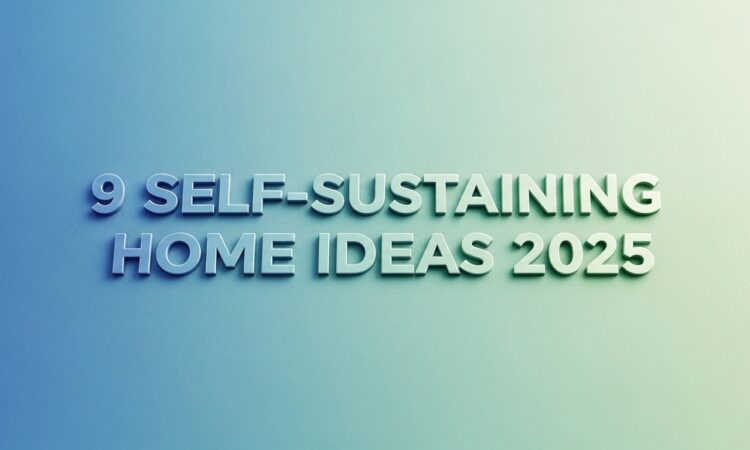
In 2025, the desire for a more resilient and independent lifestyle is stronger than ever. Rising energy costs, concerns about the stability of the grid, and a growing passion for sustainable living have more and more homeowners looking for ways to reduce their reliance on outside utilities. The ultimate goal for many is creating a self sufficient home—a space that provides for its own needs and offers security and peace of mind, no matter what’s happening in the world outside.
While the idea of going completely “off-grid” can seem daunting, self-sustainability is not an all-or-nothing proposition. It’s a spectrum of choices and projects, big and small, that you can undertake to build a more independent future for your family. This guide from Family Handyman breaks down nine key ideas—from simple weekend projects to major upgrades—that will put you on the path to creating a truly self-sustaining home.
What Is a Self-Sustaining Home?

At its core, a self-sustaining or self sufficient home is a residence designed and equipped to meet its own essential needs with minimal to no reliance on public utilities like the electrical grid, municipal water systems, or natural gas lines. It’s about creating a closed-loop system where you generate your own power, collect your own water, and ideally, grow some of your own food.
Think of self-sufficiency as having three main pillars:
- Energy Independence: This involves reducing your home’s overall energy consumption while generating your own electricity, typically through solar power. It also means having a reliable source of heat that doesn’t depend on the grid.
- Water Independence: This focuses on reducing your consumption of municipal water by collecting and storing rainwater for non-potable uses like gardening and, with proper filtration, for household use.
- Food Independence: This involves supplementing your groceries by growing your own fruits, vegetables, and herbs, and managing food waste through composting to create a sustainable cycle.
You can tackle these pillars one project at a time, with each step bringing you closer to the goal of true self-sufficiency.
Use Recycled or Sustainable Building Materials

A truly self-sustaining home considers its environmental impact from the ground up. The materials you use to build or renovate have a significant effect on your home’s carbon footprint. Opting for recycled or sustainable materials is a foundational step in green building. This means looking beyond traditional lumber and drywall and exploring innovative, eco-friendly alternatives.
Reclaimed wood salvaged from old barns or buildings brings unparalleled character and history to floors, beams, and accent walls while preventing beautiful materials from ending up in a landfill. Building materials like bamboo and cork are rapidly renewable and highly durable. For insulation, consider products made from recycled denim or cellulose. When you choose sustainable materials, you’re not only reducing waste but also often choosing healthier, less-toxic products for your family’s living environment. A great weekend project is to check out a local architectural salvage yard—you never know what unique, sustainable treasures you might find.
Improve Your Home’s Insulation
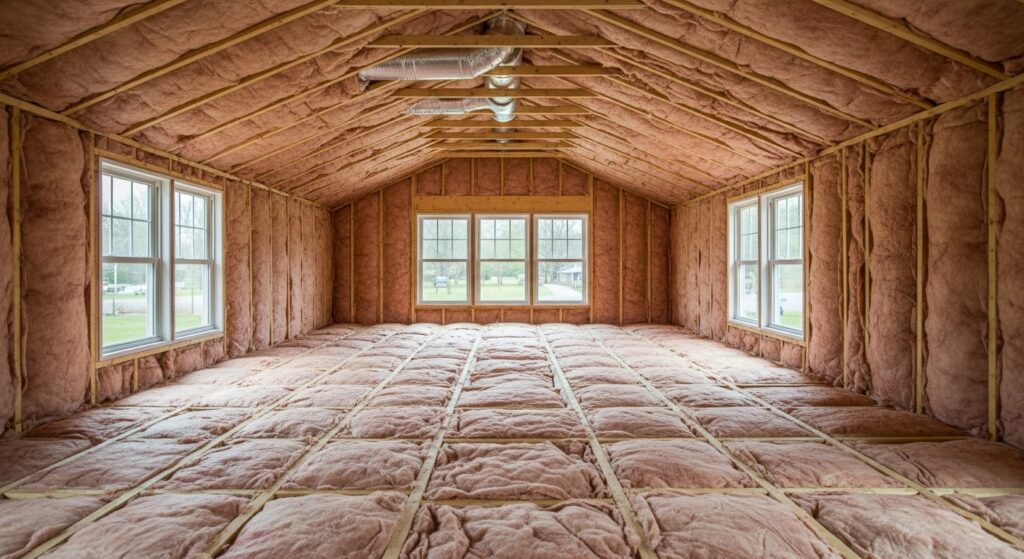
Before you even think about generating your own power, the most critical step is to drastically reduce the amount of power you need in the first place. The single most cost-effective way to do this is by improving your home’s insulation. A well-insulated house acts like a thermos, keeping the conditioned air inside and the outside temperatures out. This means your heating and cooling systems run far less often, saving an enormous amount of energy.
Start with an energy audit to find where your home is losing the most heat. The attic is often the biggest culprit. A weekend DIY project of adding blown-in cellulose or fiberglass insulation to your attic floor can pay for itself in energy savings within just a few years. Don’t forget to seal air leaks around windows, doors, and electrical outlets with caulk and weatherstripping first. Improving your home’s thermal envelope is the bedrock of energy independence.
Install a Solar Water Heater
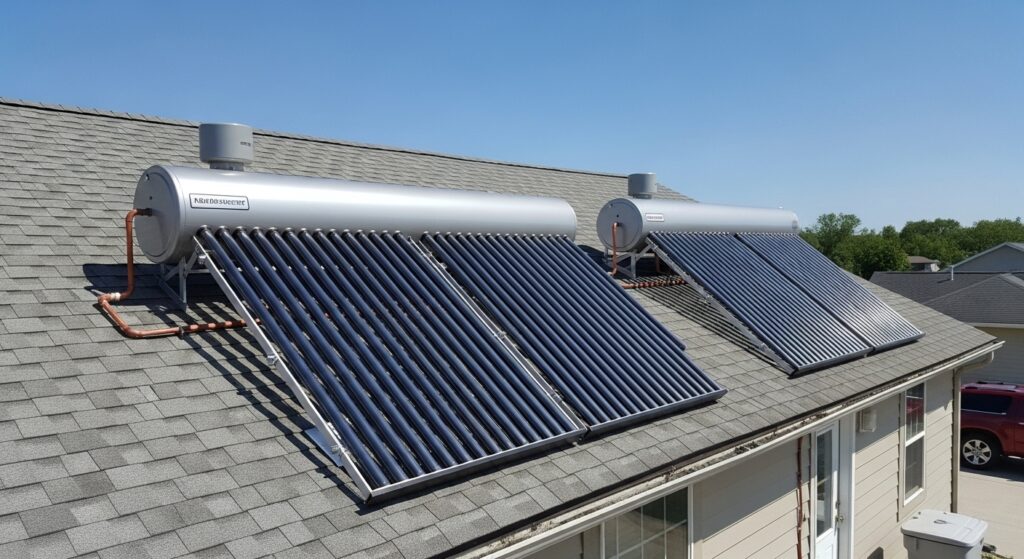
After home heating and cooling, water heating is typically the next largest energy expense in a household. A solar water heater, also known as a solar thermal system, uses the free, abundant energy of the sun to heat your water, dramatically reducing your reliance on your gas or electric water heater. These systems work by circulating a fluid through a solar collector on your roof, where it’s heated by the sun. This heat is then transferred to the water in your storage tank.
There are various types of systems designed to work efficiently in nearly all US climates, including areas with freezing temperatures. While the initial installation is an investment, the long-term savings are substantial. Over its lifespan, a solar water heater can cut your water heating bills by 50-80%, making it a powerful step towards building a more self sufficient home.
Install a Wood Stove

For true energy independence, having a reliable source of heat that works during a power outage is essential. A modern, high-efficiency wood stove provides a powerful, comforting, and non-electric source of heat for your main living area. This is a far cry from the smoky, inefficient fireplaces of the past. Today’s EPA-certified wood stoves are marvels of engineering, designed to burn wood cleanly and completely, extracting the maximum amount of heat while producing minimal smoke and ash.
If you have access to your own wooded property or a local, sustainable source of firewood, a wood stove allows you to heat your home using a renewable resource. It’s a classic, time-tested tool for self-sufficiency that offers both cozy ambiance and crucial resilience when the grid goes down. Always ensure professional installation that meets all local building and safety codes.
Buy or Build a Food Composting Bin
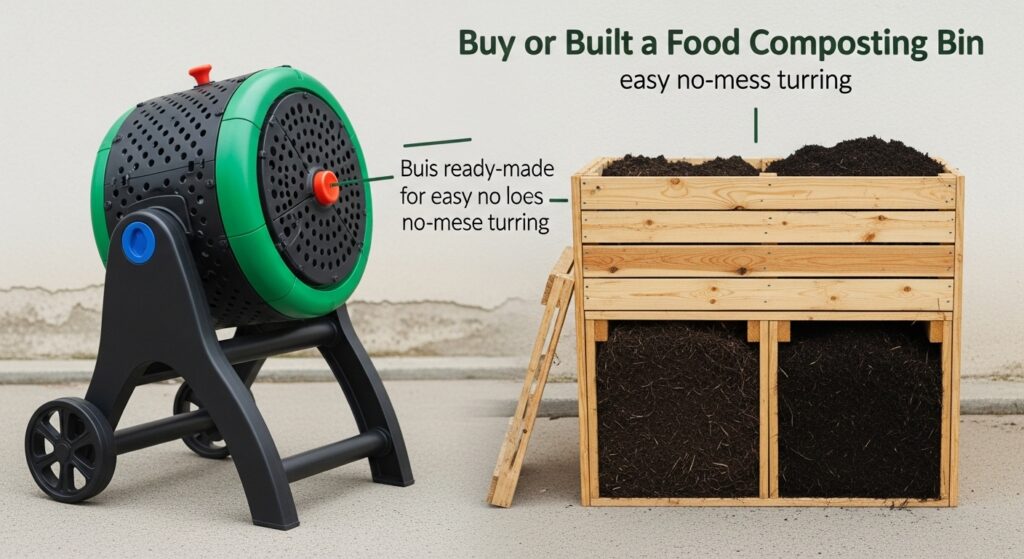
Creating a closed-loop system is a key principle of self-sufficiency, and composting is a perfect example. Every year, households throw away hundreds of pounds of food scraps, which then rot in landfills and release methane, a potent greenhouse gas. A composting bin allows you to intercept this “waste” and turn it into a valuable resource: dark, nutrient-rich soil amendment known as “black gold.”
You can buy a ready-made compost tumbler for easy, no-mess turning, or you can build your own multi-bin system from simple materials like reclaimed wood pallets—a fantastic weekend DIY project. By composting your fruit and vegetable peels, coffee grounds, and yard trimmings, you eliminate waste and create free, organic fertilizer that will make your garden thrive.
Install a Water Collection System
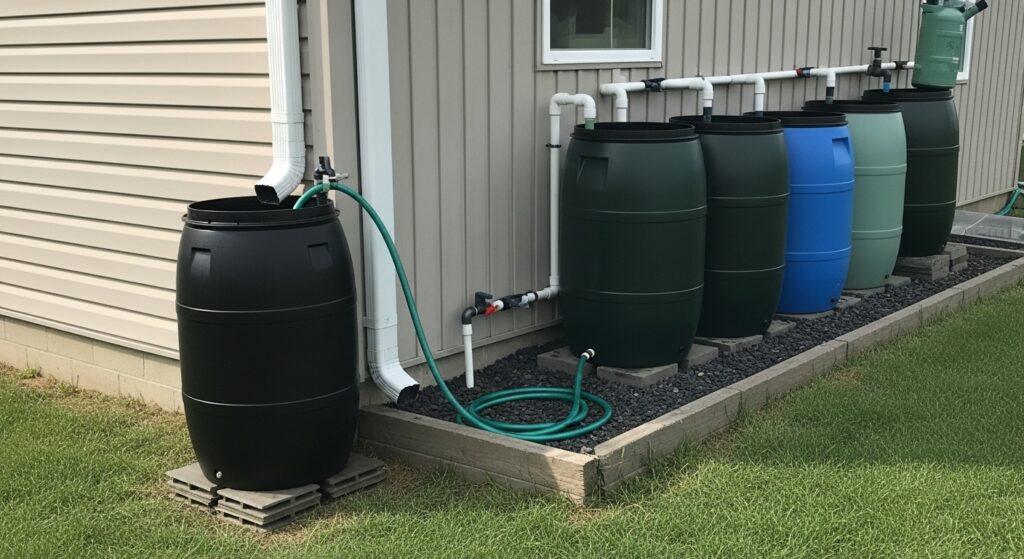
Water is a precious resource, and reducing your reliance on municipal water is a major step toward self-sufficiency. A rainwater harvesting system allows you to collect and store the rain that falls on your roof for later use. This collected water is perfect for all non-potable needs, especially watering your garden, which can significantly reduce your water bill during the dry summer months.
The simplest way to start is by placing a rain barrel at the base of one of your gutter downspouts. You can easily connect a hose to the spigot for easy access. For a more robust system, you can link multiple barrels together or install a larger cistern that can store hundreds or even thousands of gallons. Before starting, be sure to check your local regulations, as some municipalities have specific rules regarding rainwater collection.
Plant a Garden
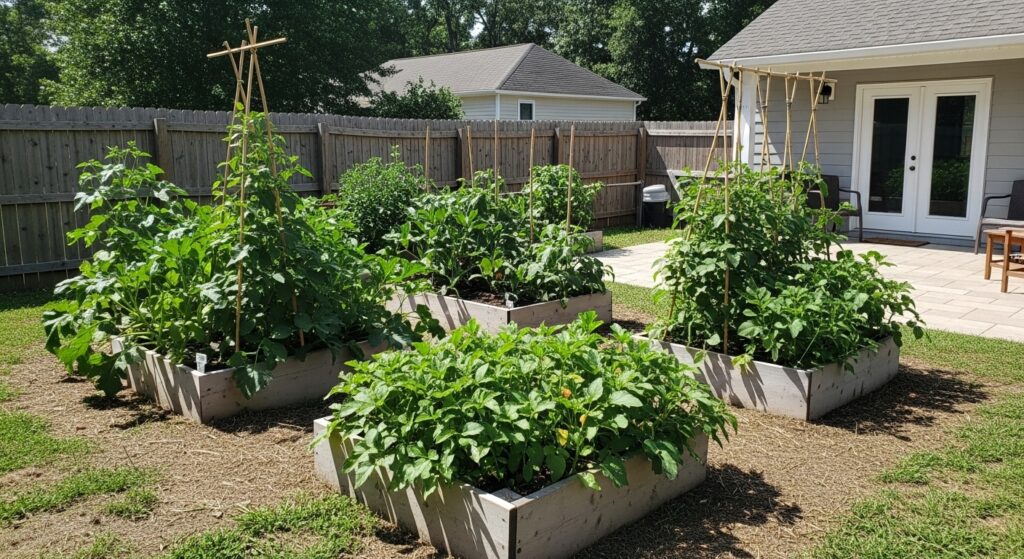
Growing your own food is arguably the most rewarding and empowering aspect of creating a self sufficient home. A backyard vegetable garden provides your family with the freshest, healthiest, and best-tasting produce imaginable, completely free from pesticides and long-distance shipping. It reduces your grocery bills and gives you a real connection to your food and the seasons.
You don’t need a huge plot of land to get started. A few raised garden beds, or even a collection of containers on a sunny patio, can produce an incredible amount of food. Choose vegetables and herbs that your family loves to eat and that grow well in your specific US hardiness zone. By feeding your garden with the compost you created and watering it with the rain you collected, you create a truly beautiful and sustainable food system right in your own backyard.
Install Energy-Efficient Windows and Doors

Your home’s windows and doors are critical components of its thermal envelope. Old, single-pane, or poorly sealed windows and doors are like giant holes in your wall, allowing precious heated or cooled air to escape. Upgrading to modern, energy-efficient units is a significant investment that pays huge dividends in both energy savings and home comfort.
Look for ENERGY STAR certified windows, which are independently tested to meet strict efficiency standards for your climate zone. Double-pane or even triple-pane glass with a Low-E (low-emissivity) coating and argon gas fill will provide a superior thermal barrier. A new, well-insulated fiberglass or steel entry door will also prevent drafts and energy loss. This upgrade not only slashes your energy bills but also makes your home quieter and more comfortable year-round.
Install Solar Panels
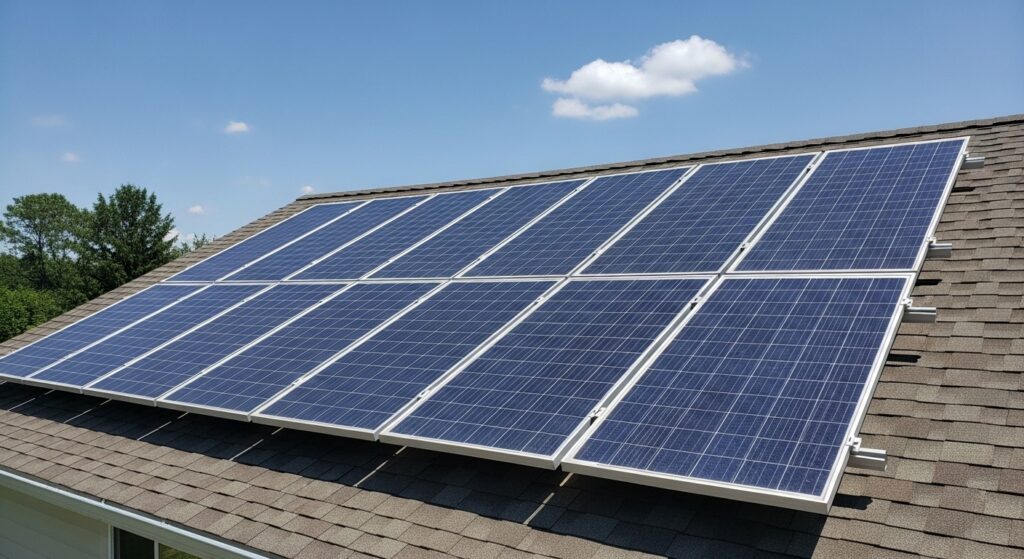
The ultimate step in energy independence is to generate your own electricity. Installing a rooftop photovoltaic (PV) solar panel system allows you to harness the power of the sun to run your home. Depending on the size of your system and your energy usage, you can drastically reduce or even completely eliminate your monthly electricity bill. In many areas, with a grid-tied system and net metering, you can even sell excess power you generate back to the utility company.
While a major investment, the cost of solar technology has decreased dramatically, and generous federal and state tax incentives can significantly reduce the upfront cost. Getting quotes from several reputable solar installers will help you design a system that’s perfectly tailored to your roof, your energy needs, and your self-sufficiency goals.



